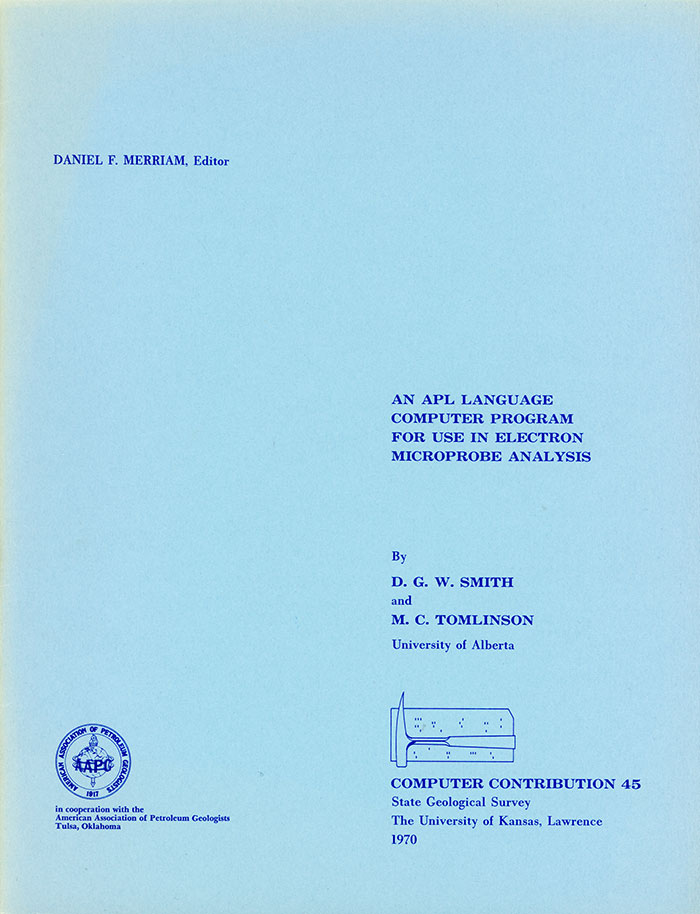
Kansas Geological Survey, Computer Contributions 45, originally published in 1970
University of Alberta

Originally published in 1970 as Kansas Geological Survey Computer Contributions 45.
The intensities of characteristic x-ray lines excited during an electron probe analysis are only approximately proportional to the concentrations of the elements present within the sample. It is well known that to obtain quantitative analyses various corrections must be applied. For a summary of the corrections the reader is referred to the excellent review articles of Keil (1967), Long (1967) and Sweatman and Long (1969).
PROBEDATA is an APL language program for correcting raw x-ray intensity data from an electron microprobe for background, dead-time, atomic number, absorption and characteristic fluorescence effects. The program can be used in the analysis of any element with atomic number in excess of ten at any integral operating voltages up to 35KV and will accomodate data for the specimen and several different standards composed of up to 20 elements. (At the present time it is impractical to apply corrections to apparent concentrations of elements with atomic numbers of 10 or less, because of the paucity of data on mass absorption coefficients at long wavelengths). Facilities also are provided for adjusting the composition of the material analyzed on some basis such as the structural formula of a mineral, or perhaps the assumed anion content on the basis of the concentrations of other elements present. This program was written primarily to deal with analyses of geological materials, but will be applicable to analyses of other materials such as ceramic and metallurgical specimens, without modification to the main program or subroutines. It was designed for use with an ARL "EMX" microprobe, but with minor modifications can be used with any of the electron probes currently on the market which have a normally incident electron beam. Fairly substantial modifications to the absorption and fluorescence corrections and different R values in the atomic number correction would be required for use with instruments such as those manufactured by AEI and MAC which have oblique electron incidence.
In writing the program, emphasis has been placed on making it suitable for as wide a range of materials as possible, rather than on providing sophisticated facilities for the input of data in variable amounts and variable form. It is considered more convenient to perform simple preliminary procedures, such as the averaging of data, on an electronic desk calculator although limited optional facilities for this have been provided. Thus the program is particularly well suited for use with a wide range of different samples rather than a large number of similar samples run in one batch. However, facilities have been included whereby a large group of samples run against one set of standards may be corrected at one time by activating an optional loop.
For a description of APL, the reader is referred to the IBM user's manual (Falkoff and Iverson, 1968).
We are grateful to Dr. J. Rucklidge of the University of Toronto, Dr. S.J.B. Reed of the Department of Mineralogy, British Museum (Natural History), and Mr. G. Gabel of the Department of Computing Science, University of Alberta, for valuable advice in the preparation of this program. One of us (D. G. W. S.) is pleased to acknowledge financial support from the National Research Council of Canada for this work.
Read the PDF version (4.3 MB)
Kansas Geological Survey
Placed on web Aug. 29, 2019; originally published 1970.
Comments to webadmin@kgs.ku.edu
The URL for this page is http://www.kgs.ku.edu/Publications/Bulletins/CC/45/index.html